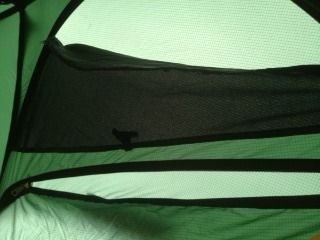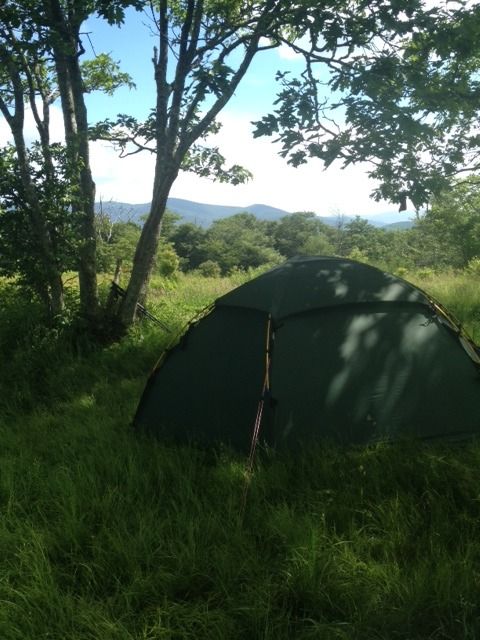To point one, packing a wet fly separating from the inner. I've never done this mainly because the whole wad is wet by this time---the inner tent canopy is moist with condensation, the tent floor is wet and muddy, and the fly of course is soaked. I just wad up the whole bundle and put in my stuff sack. When I get to camp later in the day I set up fast and shake the inner tent canopy vigorously to dislodge water droplets and then paper towel off the floor to pull out any small puddles. This is necessary for both double wall and single wall tents.
To point two, no tent of mine will ever have unsealable mesh for an inner tent canopy.
And point three, "everything is going to get wet eventually" is just not true. If it were I would've been dead long ago. The tent gets soaked and some hiking clothing, but nothing else. My down parka and down bag and sleeping socks and 80% of my cold weather clothing stays dry no matter what. (Haven't fallen into a cold river yet like those guys routinely do on Alaskan Survival Race show).
And no one mentions a prolonged COLD rain or a prolonged trip at 0F or below. This is when condensation really can get bad. Thick inner frost on the tent walls. Severe fly "weeping" on the inside of the fly. Don't jostle the fly or you'll get a downpour or ice or water, hence the need for a double wall tent. The inner fly gets 60 or 70% of this moisture, the inner tent canopy gets the other 30%, numbers I can live with.
You makes some good points although I don't see ventilation making a massive difference when there is no ventilation no matter what you do. It all depends on air humidity, wind speed and air temperature. When all these factors go south, no amount of unzipped doors or vents will matter. As in: It's cold and there's high humidity and there's no wind.
A double wall tent obviously has a protective canopy (no mesh please) which allows the saturated fly to drip its moisture either down the wall of the fly or onto the solid canopy---no drips inside, please!
In terrible conditions (think a foot of wet snow with air temps at around 25F---and you're stuck inside the tent for a day), you want the most protection you can get. The fly got saturated long ago, and now the inner canopy is starting to get droplets---but at least I avoided the worst of the fly water with my inner canopy. And it's true, both will get wet if it's bad enough.
Thing is, popular single wall tents nowadays are tiny affairs and the main rule in all this talk is NO PART OF YOUR GEAR or your sleeping bag SHOULD TOUCH ANY PART of the wall of your tent, whether single or double. When a single wall weeps as bad as it does, once you touch it you or your nice nice items get wet. Not good.
I used an Akto tent recently during a warmish April snowstorm and tried it without the solid inner tent. It has 3 good sized vents fore and aft and one on the top arch. I woke up to a wet sauna mess. The inner tent would've kept me 70 or 80% drier. And here's the thing, in a bad storm or butt cold rain with 50mph winds there's no option for venting like an unzipped door to keep you ventilated. You're socked in for the duration and so give us a full report in the morning.
- Home
- Forum
- Journals
- Gallery
- What's New?
- Todays Posts
- 2,000 Miler Listing
-
Odd & Ends
- About WhiteBlaze/Tools
- About WhiteBlaze
- WhiteBlaze user agreement
- WhiteBlaze logo progression
- WhiteBlaze screen savers
- Purchase a banner spot
- Quick reference
- Usercp
- Subscribed Threads
- Members List
- Calendar
- Mark all forums read








 Reply With Quote
Reply With Quote





